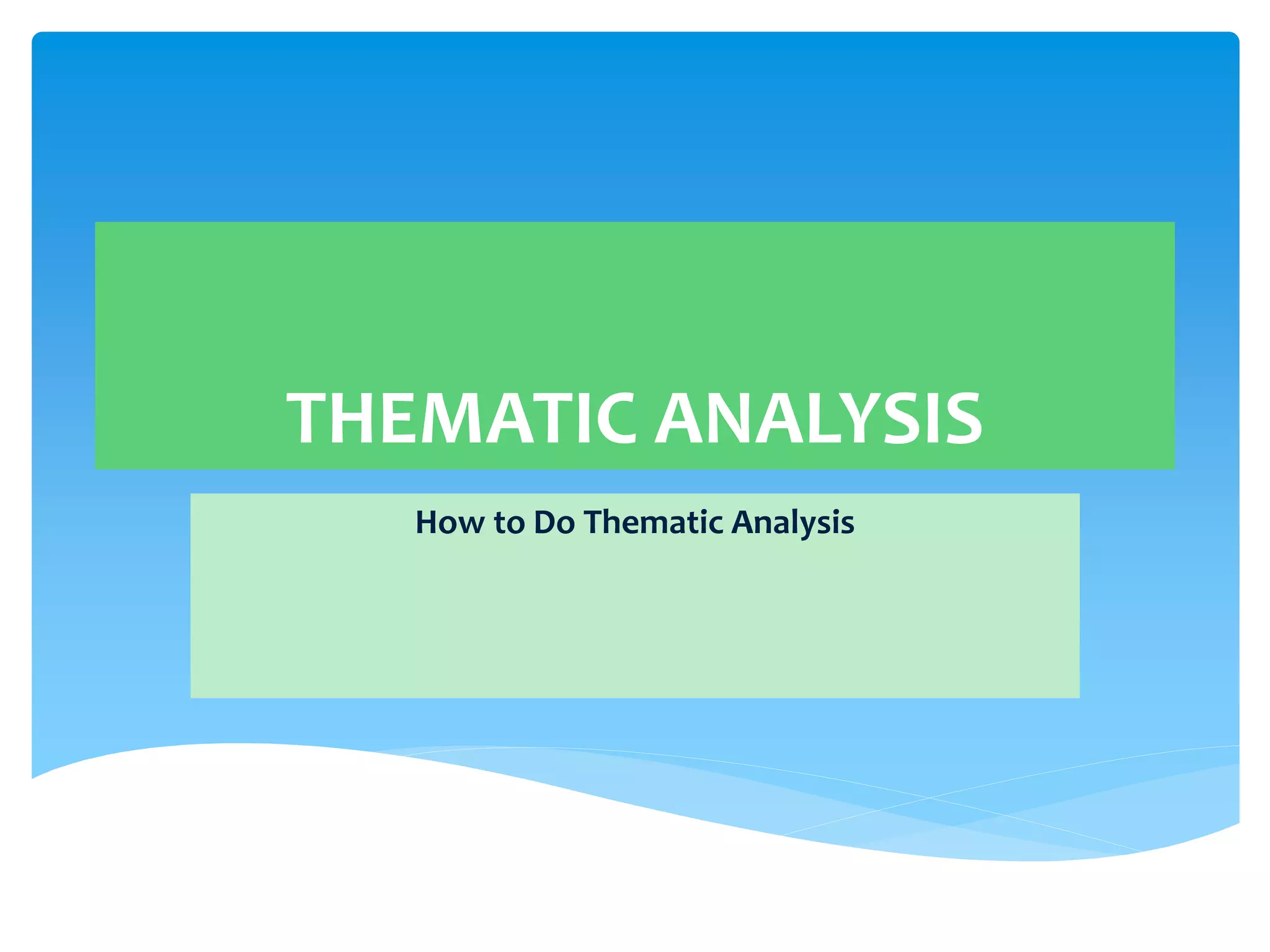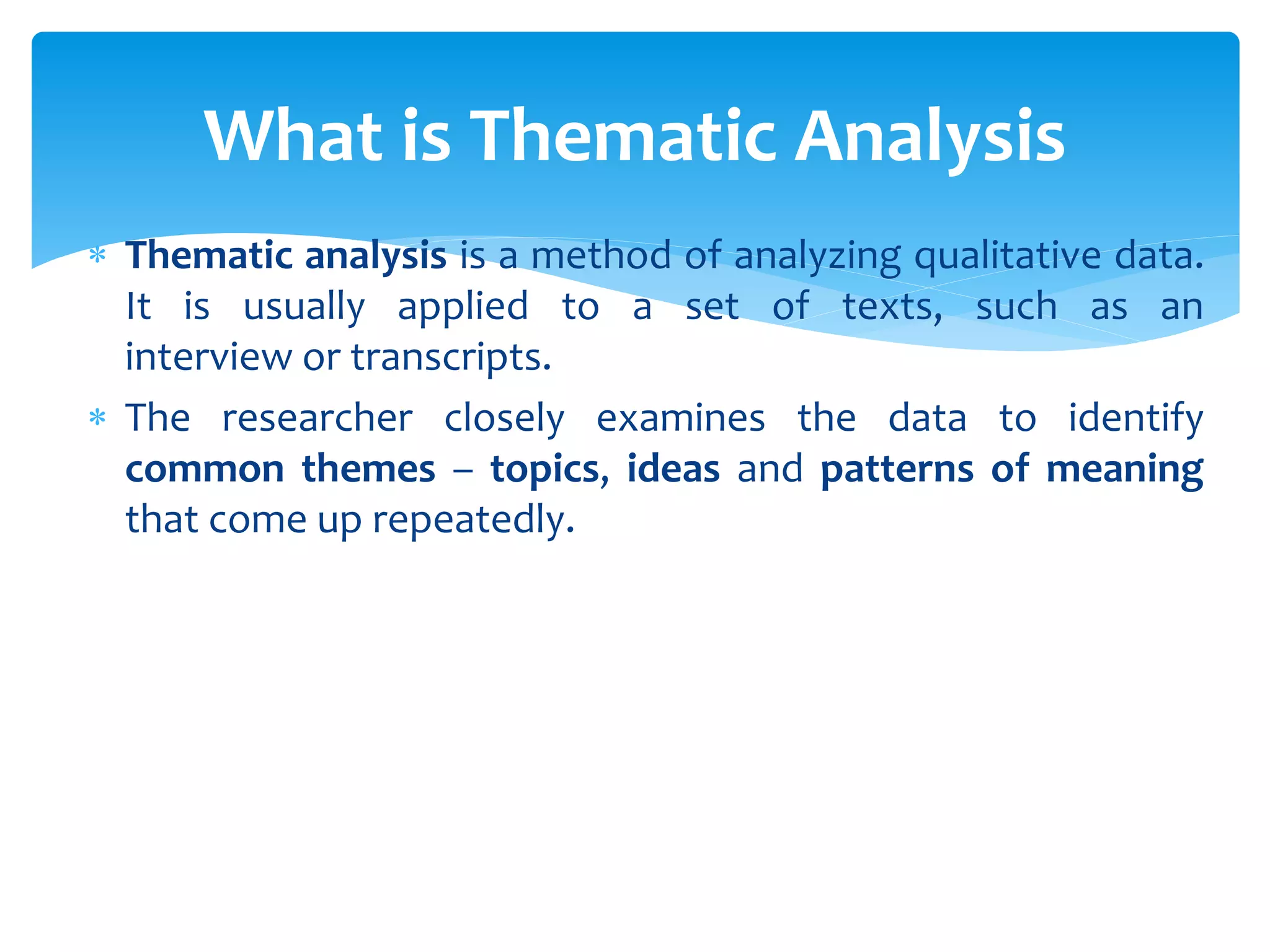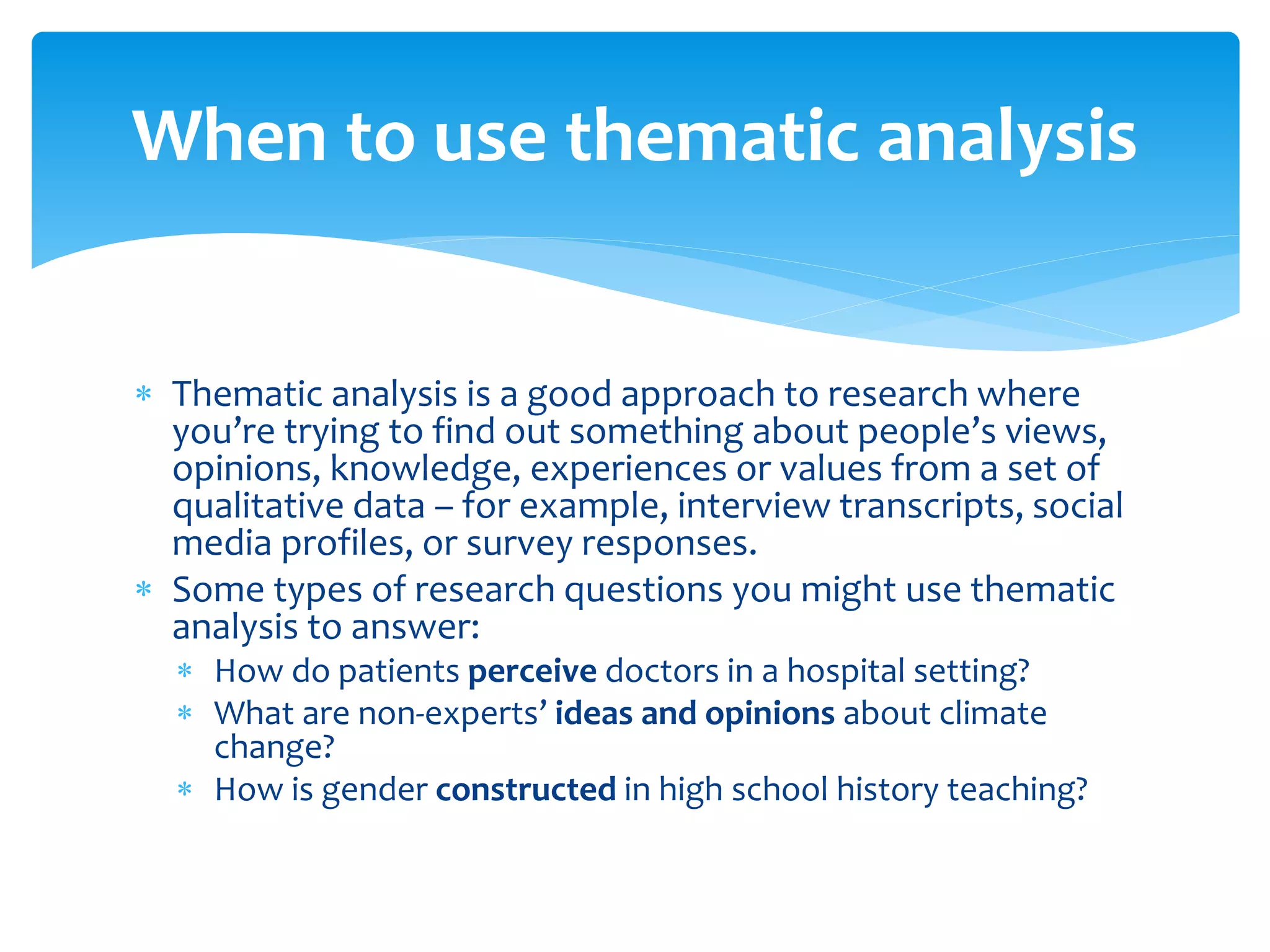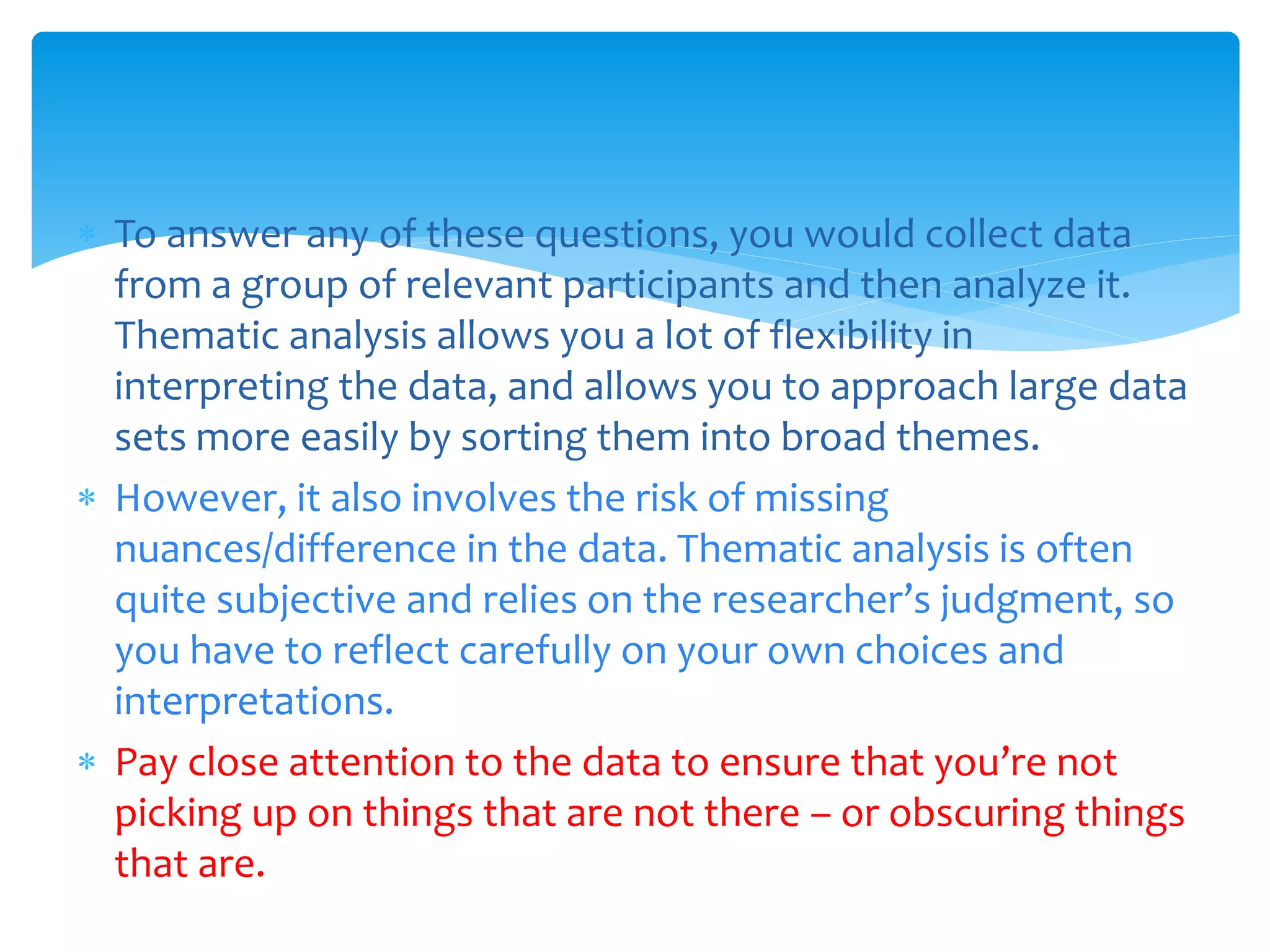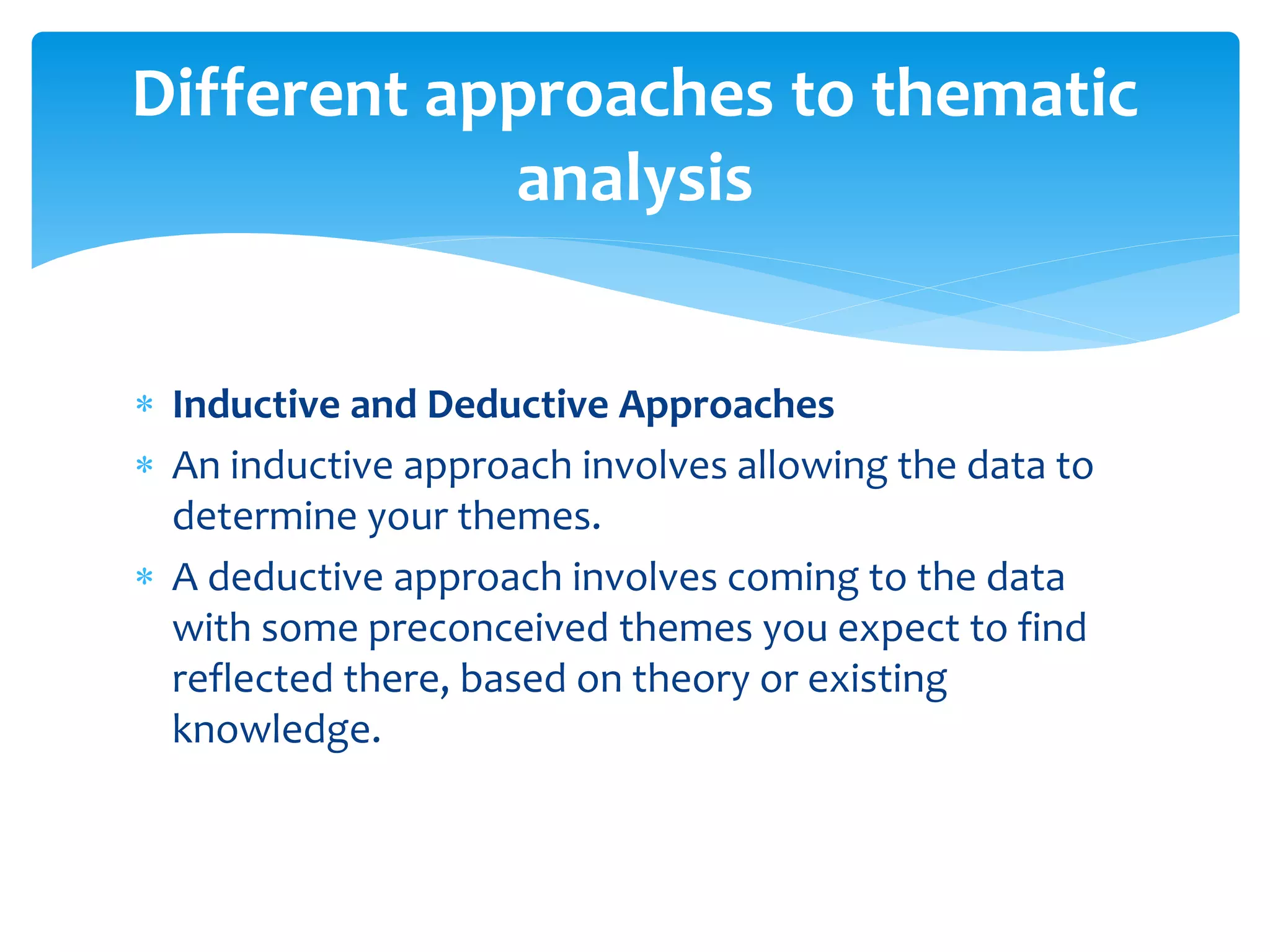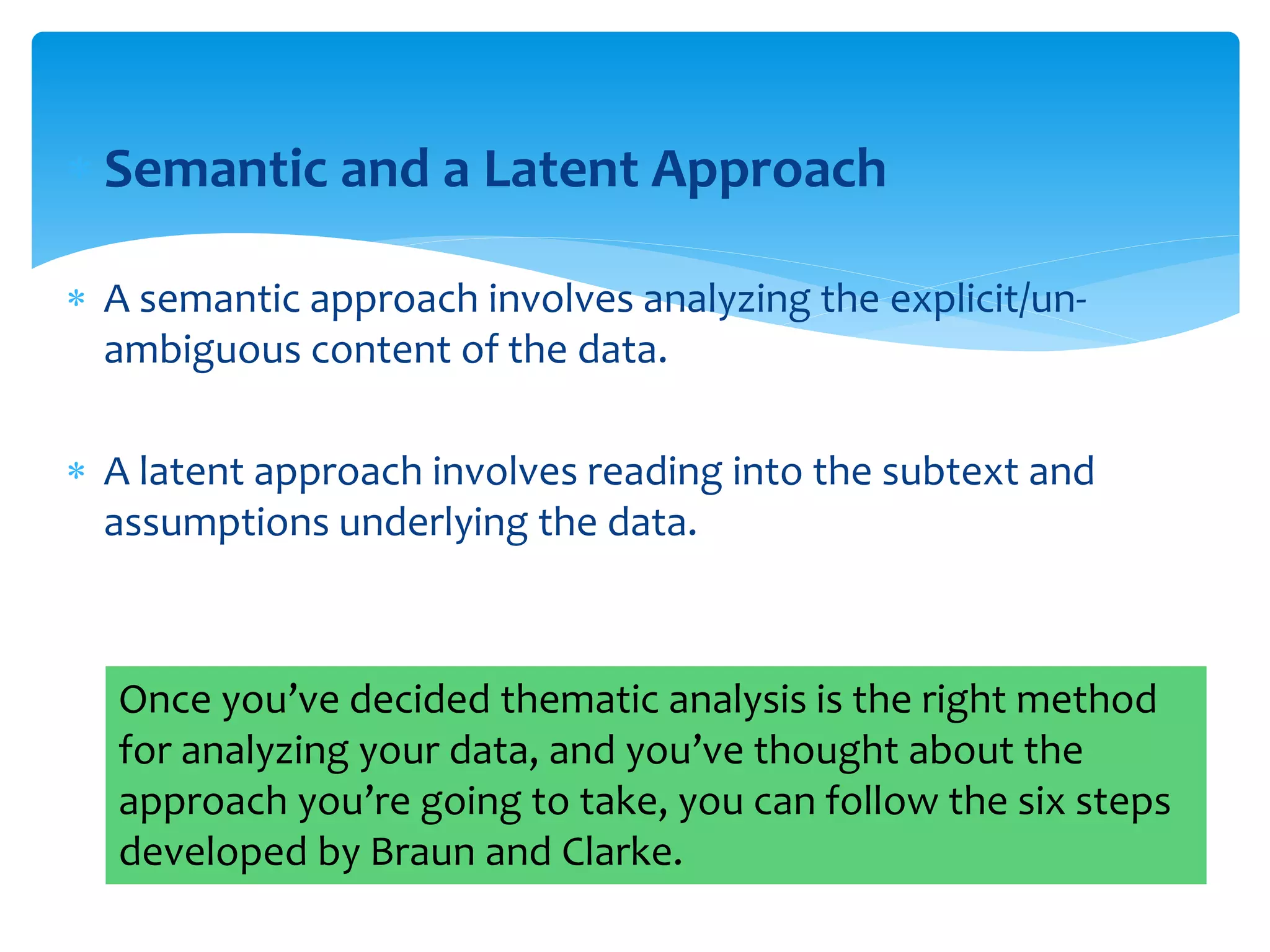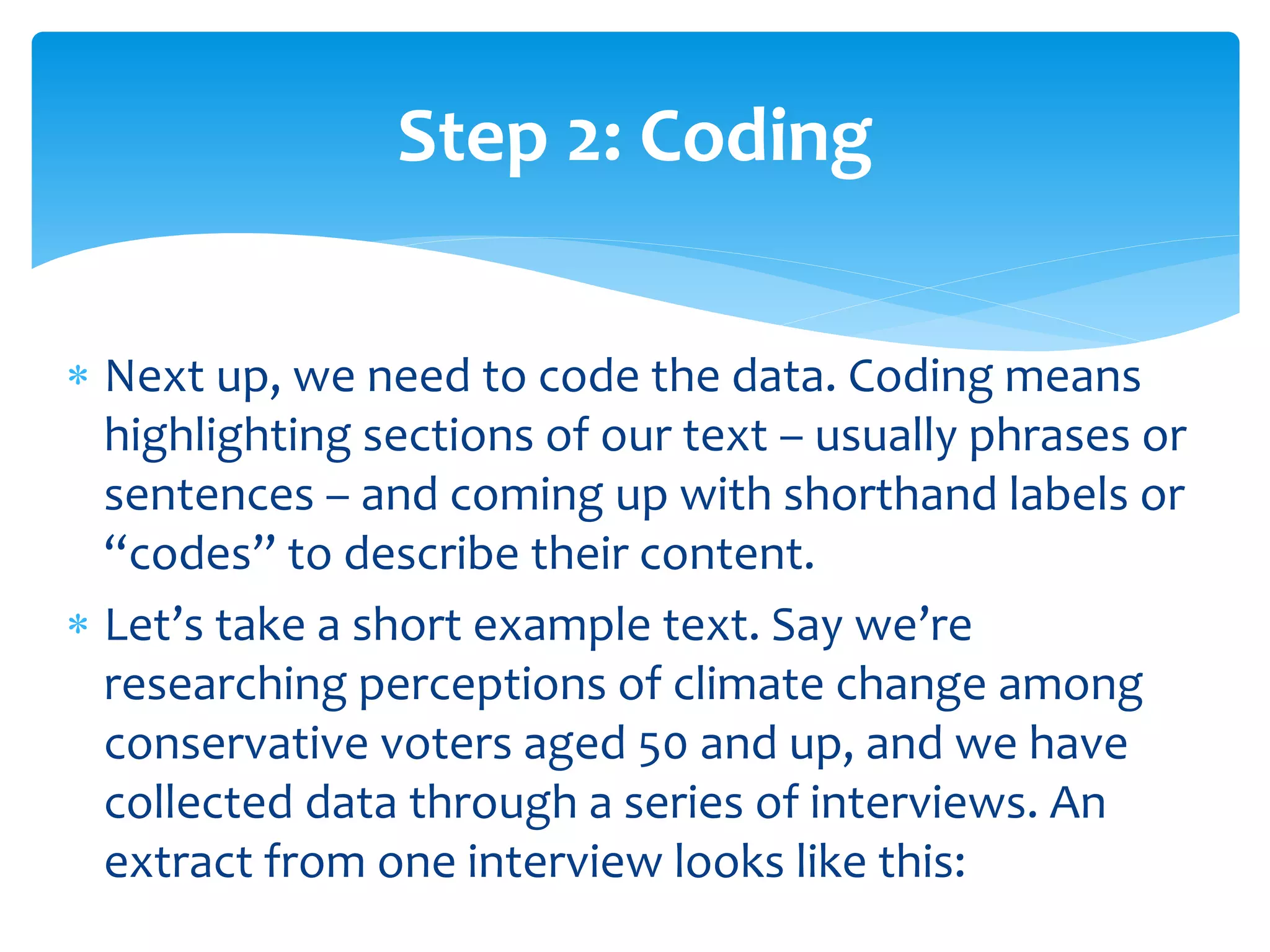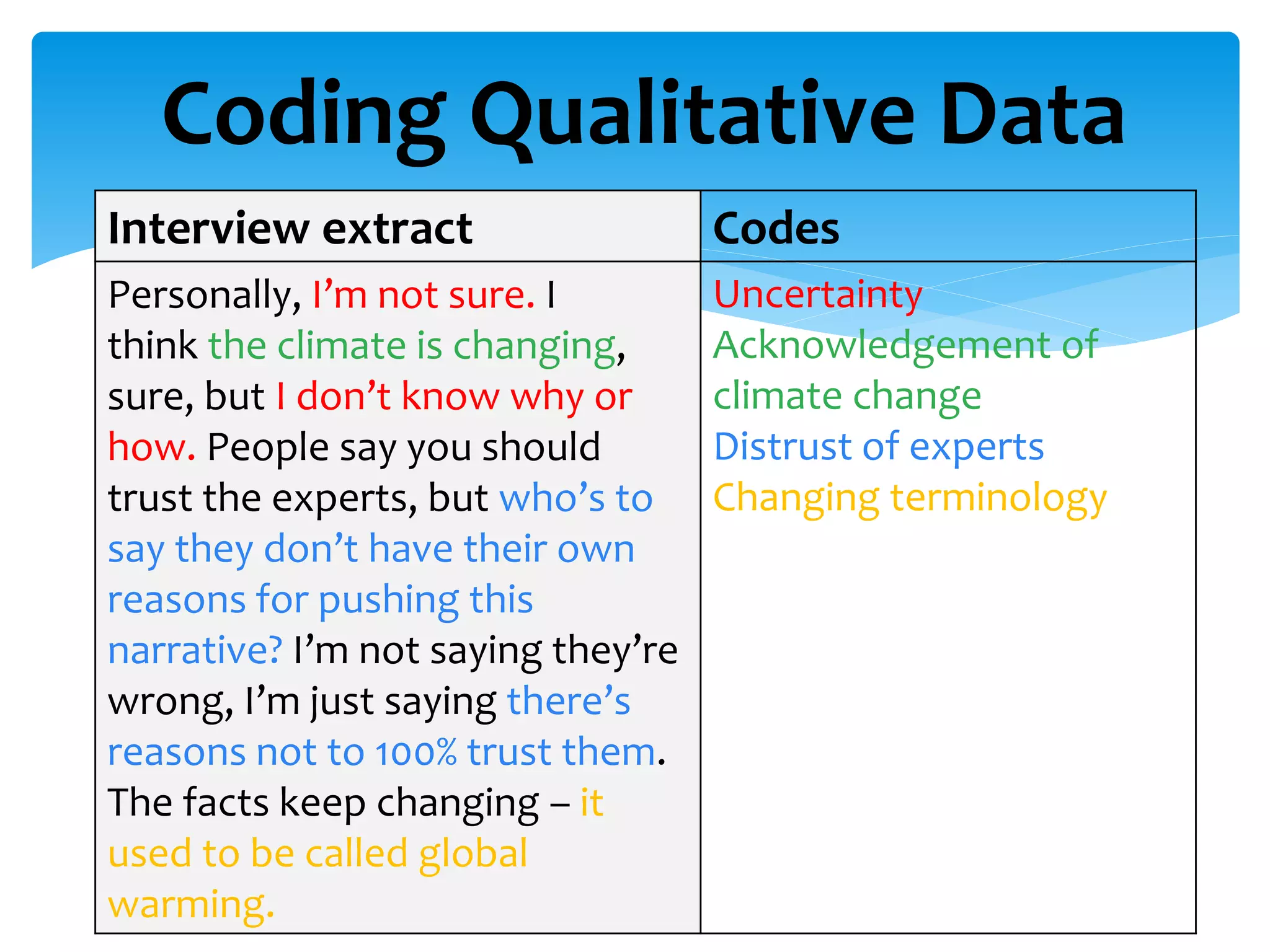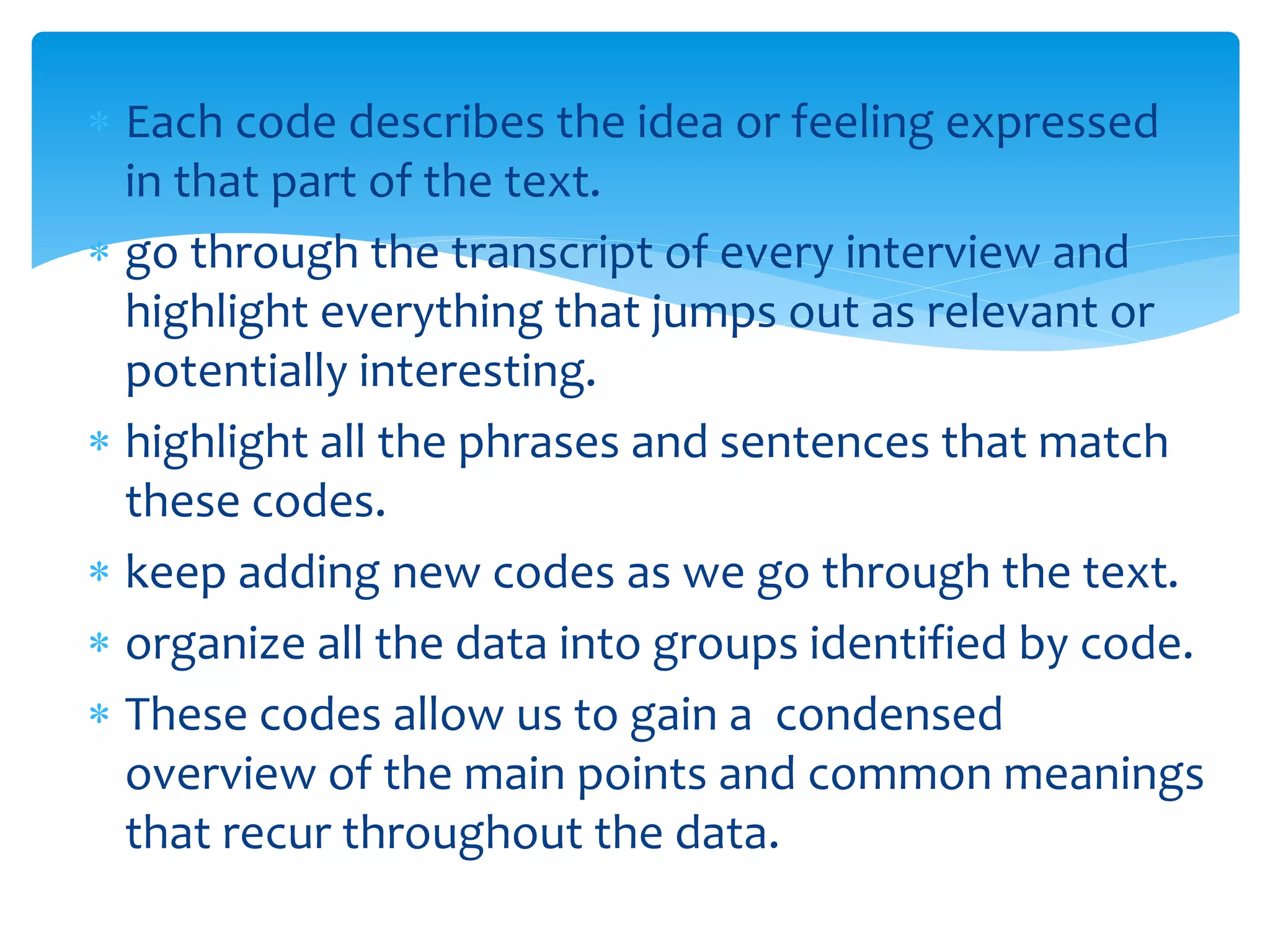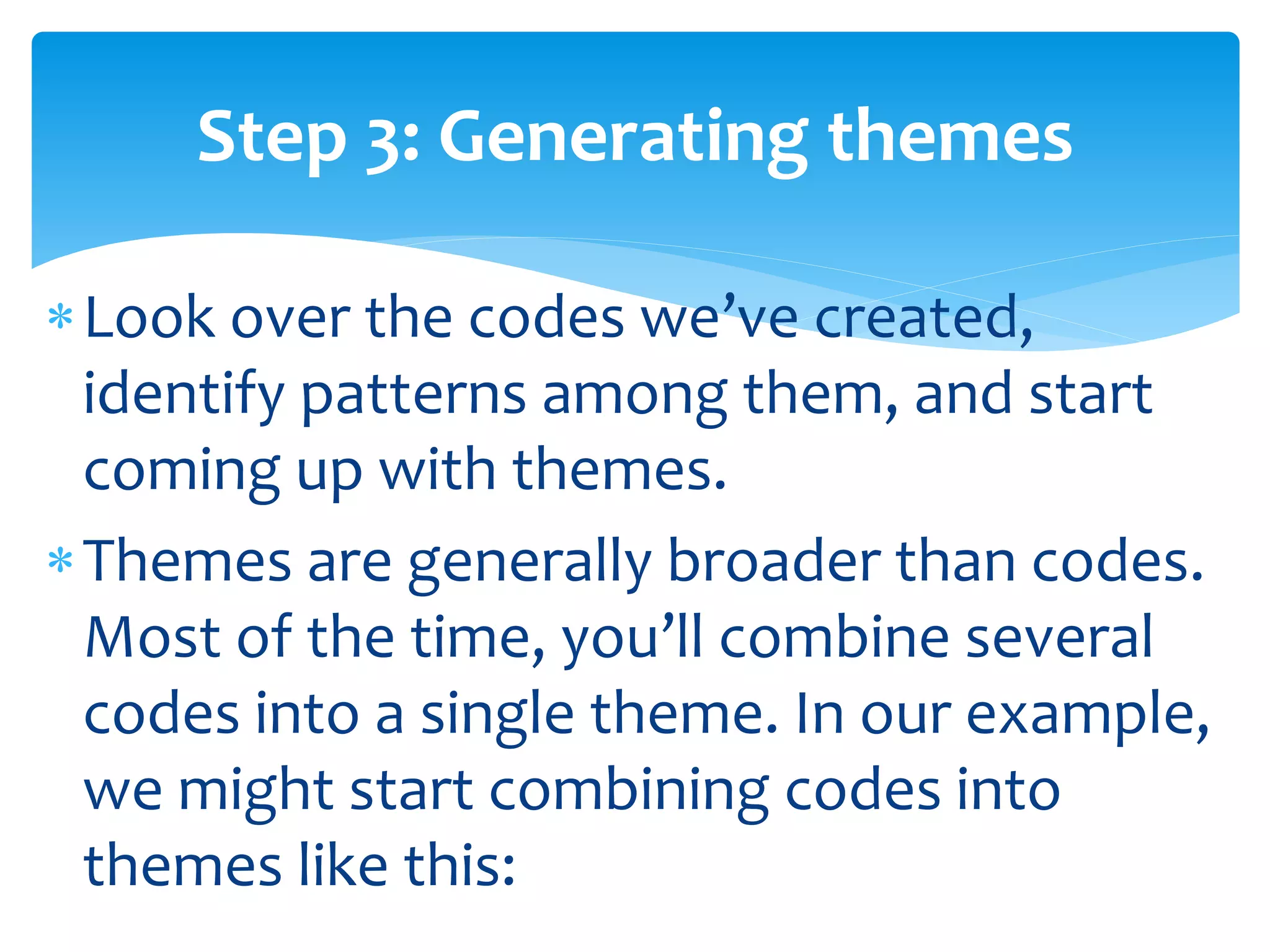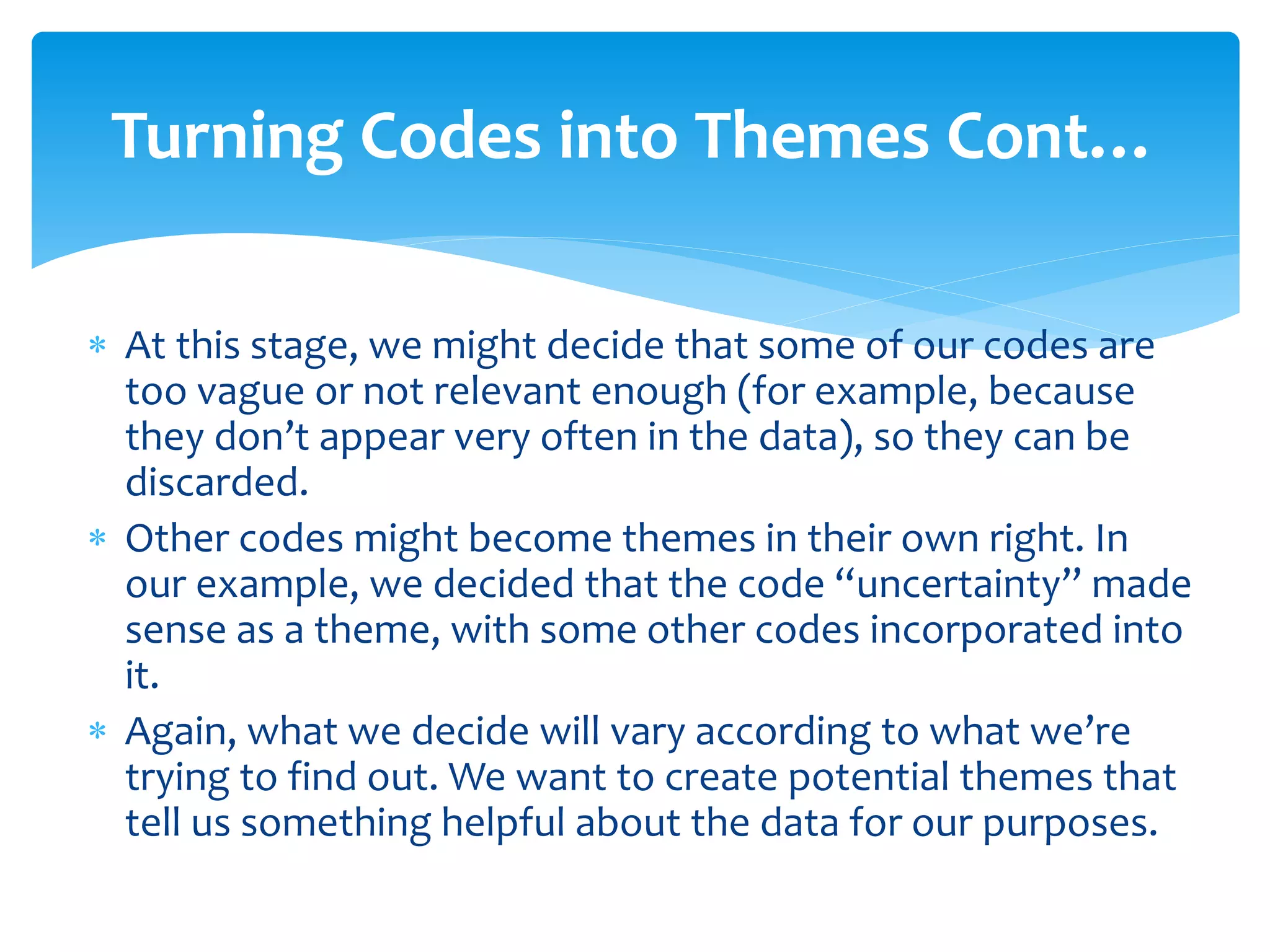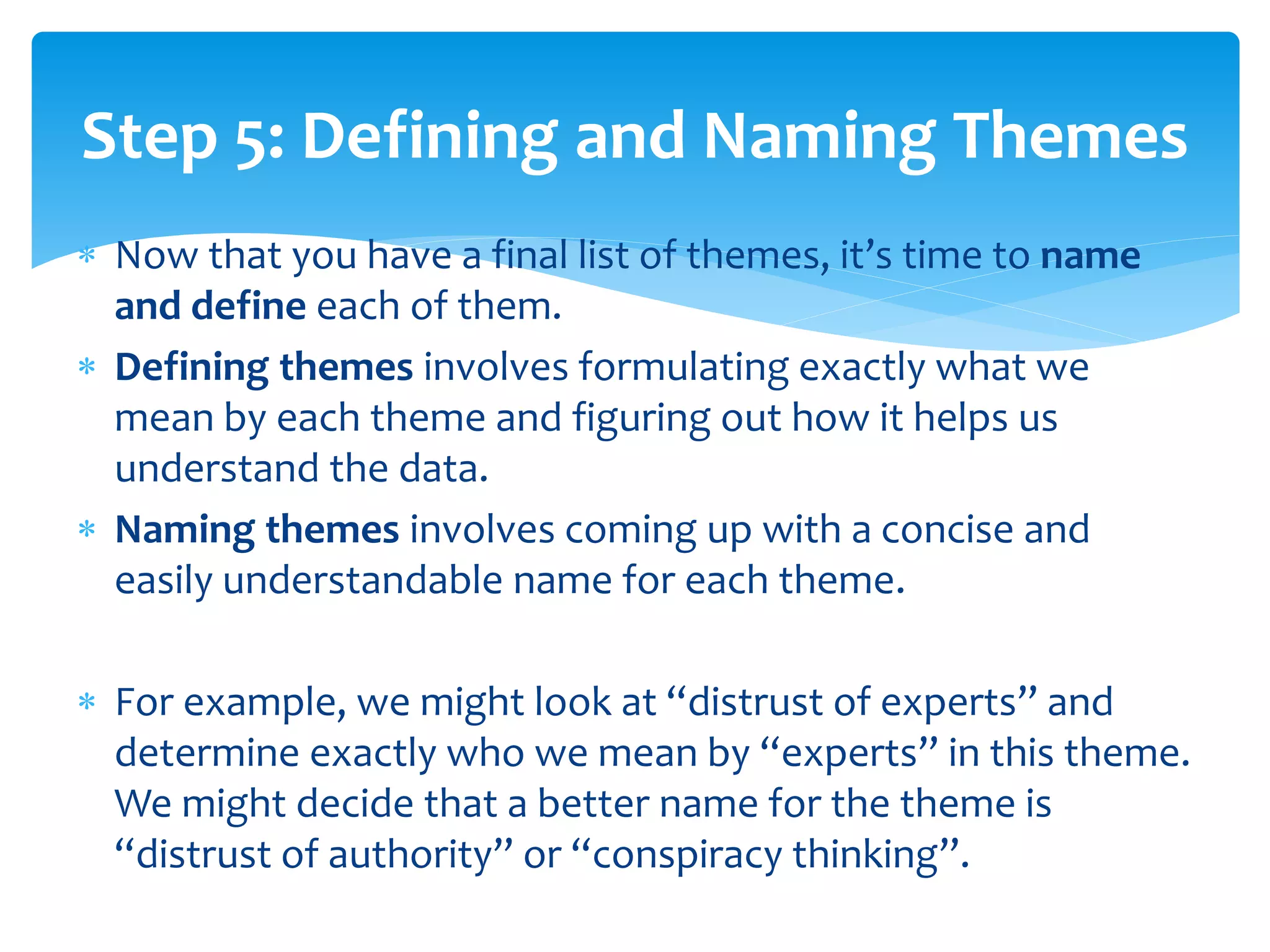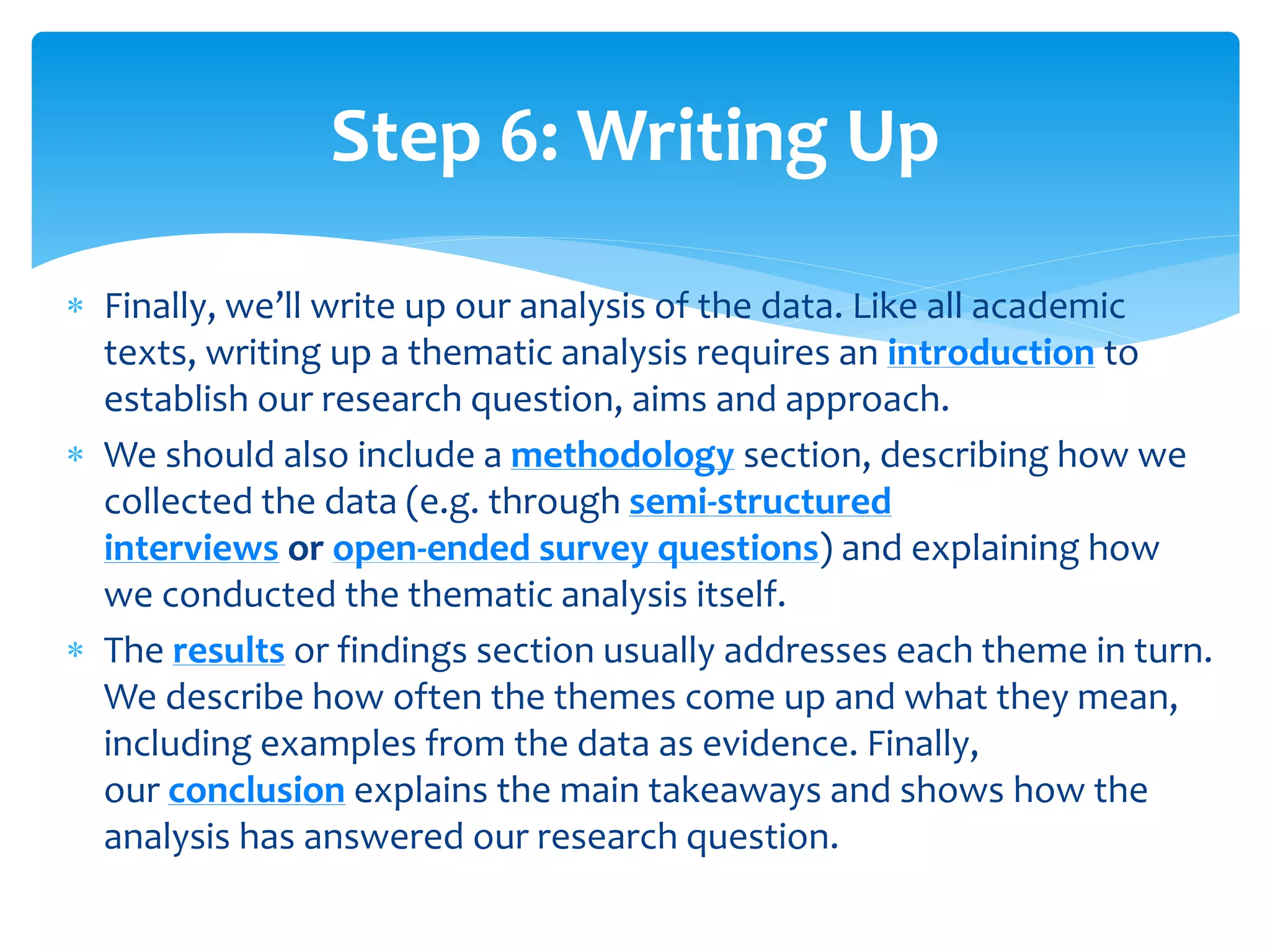Thematic analysis is a 6-step method for identifying, analyzing, and reporting patterns or themes within qualitative data. It involves: 1) becoming familiar with the data through transcription and reading, 2) generating initial codes to label important features, 3) searching for themes by sorting different codes into potential themes, 4) reviewing themes by checking if they fit the coded extracts and entire data set, 5) defining and refining the themes, and 6) producing the final analysis and reporting of the themes. Thematic analysis allows for flexibility in analyzing various types of qualitative data to understand people's experiences, perspectives, and views on a research topic.
